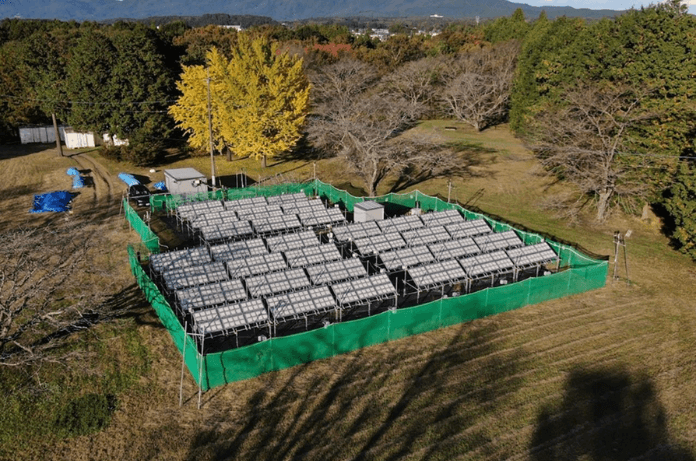The race for sustainable energy has taken an exciting turn as Japanese scientists unveil a groundbreaking method to crack water into hydrogen fuel using nothing but sunlight. Imagine a future where your car runs on fuel generated straight from the sun, or industrial plants operate on a virtually unlimited energy source. This isn’t science fiction anymore this innovative approach could make it a reality. With a specialized photocatalyst at its core, this technology promises cheaper, more abundant, and environmentally friendly hydrogen fuel.
Could this be the breakthrough we have been waiting for?
The Problem with Current Hydrogen Production
Hydrogen is often hailed as the fuel of the future. However, its current production methods tell a different story. Most free hydrogen is derived from natural gas feedstocks, a process that is neither green nor sustainable. This means that while hydrogen fuel itself doesn’t emit harmful pollutants, its production still relies heavily on fossil fuels. For hydrogen to become a true alternative to traditional fuels, we need cleaner, more efficient methods to produce it and this sunlight-powered innovation might just fit the bill.
Sunlight-Powered Hydrogen: How It Works
The Japanese team, led by Professor Kazunari Domen of Shinshu University, has turned to the sun for answers. Their new process uses photocatalysts, special materials that harness light to drive chemical reactions. The idea is simple in theory: split water into oxygen and hydrogen. However, the reality is far more complex, requiring energy-intensive processes and highly efficient catalysts to make it feasible on a large scale.
“Sunlight-driven water splitting using photocatalysts is an ideal technology for solar-to-chemical energy conversion and storage,” explained Prof. Domen, whose research was published in Frontiers in Science. Recent advancements in photocatalytic materials and systems are raising hopes that this once-futuristic concept could soon become a mainstream energy solution.
Successful “Two Step”: Hydrogen Fuel from Water using light
Unlike traditional “one-step”, when water is exposed to light, these catalysts facilitate chemical reactions that break down water into constituent parts. The method is not new, yet suffers from low solar-to-hydrogen conversion rates, the Japanese team opted for a more advanced two-step excitation system.
- In this system, one photocatalyst generates hydrogen from water, while another produces oxygen.
- This method is not only more efficient but also aligns better with real-world conditions.
Dr. Takashi Hisatomi, another senior researcher at Shinshu University, emphasized the significance of storing sunlight as chemical energy. “Solar energy conversion technology cannot operate at night or in bad weather. But by storing the energy of sunlight as the chemical energy of fuel materials, it is possible to use it anytime and anywhere,” he explained.
Proof in Action: A Real-World Reactor
To demonstrate the potential of their technology, the researchers operated a 1,076 square-foot (100 m²) reactor for an impressive three years. The results? The reactor performed even better under natural sunlight than in controlled laboratory conditions.
“In our system, using an ultraviolet-responsive photocatalyst, the solar energy conversion efficiency was about 1.5 times higher under natural sunlight,” shared Dr. Hisatomi. This is a promising leap forward, but challenges remain.
Challenges Ahead: Breaking the 5% Efficiency Barrier
Currently, the solar-to-chemical energy conversion efficiency is capped at 1%, even under simulated standard sunlight. Achieving 5% efficiency under natural sunlight is a critical milestone. To move forward, the team has called for:
- Development of More Efficient Photocatalysts: Big Breakthroughs in catalyst technology are essential.
- Larger Experimental Reactors: Scaling up the process will test its viability for mass adoption.
- Infrastructure and Policy Support: Governments and industries need to collaborate to create a framework for solar fuel technologies.
“The most important aspect to develop is the efficiency of solar-to-chemical energy conversion by photocatalysts,” stated Prof. Domen. Once this efficiency reaches a practical level, it could trigger widespread interest in mass production, gas separation technologies, and even large-scale plant construction.
What’s Next for Sunlight-Powered Hydrogen?
This breakthrough is not just about science, it’s about shaping a sustainable future. The potential applications of sunlight-powered hydrogen are vast, ranging from clean transportation to green industrial processes. If the technology continues to evolve, it could significantly change how we think about solar energy and fuel.
Support Innovation for a Greener Tomorrow
The road ahead is challenging, but the rewards are worth the effort. Scientists like Prof. Domen and Dr. Hisatomi are paving the way for a cleaner, more sustainable world. To support this vision: Policymakers must create favorable laws and regulations for solar fuel technologies.

